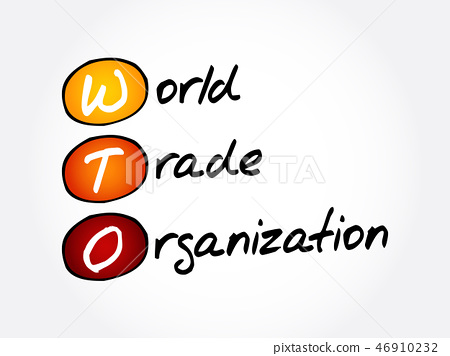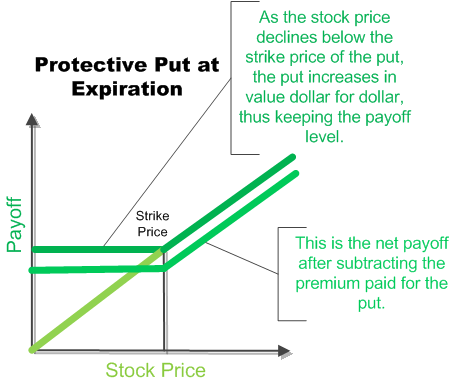Contents
Through both his writing and his daily duties in trading, Adam helps retail investors understand day trading. He has experience analyzing various financial markets, and creating new trading techniques and trading systems for scalping, day, swing, and position trading. Therefore, investors should be careful with the risks of such short-term market price changes. However, a trader can gauge the right distance from the historical price movements, through backtesting. The aim is to set the trailing stop at a distance from the current price where it is not expected to be triggered unless the price has changed direction. So if the normal pullbacks in a market are about $10 or less, a trailing stop that is more than $10 is necessary, but it shouldn’t be too far from that so as not to give back much of the profits.

People who are particularly risk-averse and believe that the price of the security is not going to go back up once it falls should also opt for the trailing stop loss order. There are some stockbrokers in financial markets who do not allow investors to put stop loss orders for some particular shares and exchange-traded funds. Let’s say that an investor, Mr B buys 200 shares of ABC Company at Rs 50 each.
Our sample stock is Stock Z, which was purchased at $90.13 with a stop-loss at $89.70 and an initial trailing stop of $0.49. When the last price reached $90.21, the stop-loss was canceled, as the trailing stop took over. As the last price reached $90.54, the trailing stop was tightened to $0.40, with the intent of securing a breakeven trade in a worst-case scenario.
But if the price were to start to fall, the stop loss wouldn’t move. Thus, the price could be set with the market analysis and set with this tool for having the market risks minimised. Traders can install the trading platforms easily with PrimeFin; they have MetaTrader4. It is the best trading platform globally due to its flexibility and user-friendliness.
You can set the Trail to be either a dollar amount or a % of the current price. The trailing price is based on the last traded price at the time of the order and tracks it throughout the lifetime of the order. Trailing stops help prevent this from happening, protecting the profits on a successful trade as well as minimising losses.
Trailing stop order vs. a Trailing stop Limit Order
Investors should check with their brokerage firms to determine which standard would be used for their trailing stop orders. The main alternative to a trailing stop-loss order is the trailing stop limit order. It differs only in that once the stop price is reached, the trade is executed at the limit price you have set—or a better price—rather than at the then-available market price.
A trailing stop will let you ride the market up, and get you out when it falls. It greatly maximizes profit and minimizes loss, without forcing you to think about it. If you know you can’t Cost and Freight actively trade a position, plan for it. Is there a price point where you’ll want to adjust your risk? Stop-limit orders become limit orders once they reach the stop’s execution point.
- Trailing stops are used to manage risks, protect profits, and ride a trend.
- For a sell order, this means that the price could keep dropping without filling your order and your losses will not be minimized.
- I would expect ATR stop to have similar performance to % method.
- Unfortunately, market orders can have a lot of “slippage” resulting in overpaying for shares in fast moving, thin liquidity and/or volatile market or individual stock.
- This will change the price box to show LMT and you will also now see the STP and Trail boxes next to it.
So trader place sells stop-limit order of $5 below the sell stop price. Do consider the sell stop limit order will only become active, once the price will touch $13 below the current market price mark. Trailing stop-limit orders are type of pending orders that move along with market price. These trailing stops are used to limit the losses and exhibit a very interesting concept. It consists of two fixed amounts orders Trailing Stop Price and Trailing Sell Limit. These orders are placed either above or below the market’s current price.
When Can Trailing Stop Loss be Used?
Instead of selling it at the market price, the order will now state that the security can be sold as long as the broker can find a buyer for the security at or above $51.30 . In other words, the major difference between a stop limit order and a stop order is that the latter does not place a market order when your stop level is triggered. Instead, you set a limit price, and the security will only be sold if your broker is able to find a buyer/seller at the price you have stated or better. This is also the reason why trailing stops are used mostly with trend following strategies. With a stop loss level that rises or falls with the trend, you are in for the long trends, while the trade is exited as soon as there is a reversal of the trend. People often call trailing stop loss orders profit protecting stops.
Trailing stop orders are an excellent way to manage your risks in the financial market. However, as you can see above, the orders come with their own risks. In most cases, a trailing stop of about 10% is usually adequate. When the price of a security with a trailing stop increases, it “drags” the trailing stop up along with it.

This is another way a tight trailing stop can stop you out of a trade. One thing we do with our SteadyTrade Team mentorship program is discuss how these rules can work for or against traders. God knows whatever the broker you’re trading with wants to call that distance, but still in the end $5. Locking in profits on an already profitable trade and giving it the chance to accumulate more profits if possible. Unless you select specific trading hours, advanced orders will only be triggered during regular trading hours or continuous trading session. Donchian ChannelIn the image above, you can see where the trade was entered and how the Donchian Channel followed the price.
How to set a trailing stop loss?
When using a trailing stop, it is very important to set it at the right level. This means setting it at a level that is not too close to the current price level and not too far either. One of the main benefits of a trailing stop is that it helps a trader to ride the winners. In the image below, you see how we entered a trade with our trailing stop loss in place. If the trailing stop had been hit before the market had advanced in our direction, then we would have incurred a loss. Being like a stop loss, a trailing stop can be used to prevent huge losses when trading.
In general, understanding order types can help you manage risk and execution speed. However, you can never eliminate market and investment risks entirely. It’s usually best to choose an order type based on your investment goals and objectives.

You determine the limit price by specifying how far from the trigger price you’ll allow the sale of your stock to take place. Shrewd traders maintain the option of closing a position at any time by submitting a sell order at the market. That’s up to you to determine, based on your account size and risk tolerance. They might adjust the percentage as their trade becomes profitable. It helps your trading plan to set your risk above or below these levels.
How a sell order works
As the price pushed steadily toward $92, it was time to tighten the stop. When the last price reached $91.97, the trailing stop was tightened to $0.25 from $0.40. The price dipped to $91.48 on small profit-taking, and all shares were sold at an average price of $91.70. If the market price climbs to $10.97, your trailing stop value will rise to $10.77. If the last price now drops to $10.90, your stop value will remain intact at $10.77.
There are many different ways of trailing price, and each one will change how the trailing stop adapts to the movements of the market. Therefore, one method might have a significant advantage over another. However, this tends to vary by trading strategy and market, so you will once again have to test yourself, through backtesting. While it is easier to use a trailing stop to lock-in profits, a normal stop can also be used to trail the price. It only requires the trader to regularly move the stop loss to a new level, based on how the price has moved and the trailing method.
You can see from this table that the 10-day moving average does not provide a very good result. The average profit per trade of 0.13% would likely not be worthwhile for most traders. The table above shows that a simple ATR trailing stop is too tight and leads to significant losses. A stop placed at ATR points away shows a negative return-to-risk and an average profit per trade of -0.56%.
The stop-loss order set by the traders is effective until the market position of the trader is liquidated and when the traders cancel the order. Stop-limit order may not work as the price of the security traded moves away from the certain limit price set by the traders. For instance, a security trading at $100 can have a stop limit order of 10% stop price and $2 limit price. This will translate to a stop price of $90 and a limit price of $88.
Checking the Facebook price chart, you saw that the stock is trending up and that, historically, the price usually pullback about 4% to 10% before continuing to move up again. You can decide to trail by a percentage of the price movement. Trailing StopOn the other hand, if a trailing stop is too far away from the current price, it will mean giving back more profits than is necessary to find out if a trend has reversed. So the best thing is to find an appropriate middle ground, but getting the ideal trailing distance is not always easy, as the market condition is always changing. As always, you should try to backtest your strategy in order to find out what works best.
Gapping occurs when a stock, or another trading instrument, opens above or below the previous day’s close with no trading activity in between. The trailing stop/stop-loss combo eliminates the emotional component from trading, letting you rationally make measured https://1investing.in/ decisions based on statistical information. Make sure you know the order types before you do any kind of trading. If you don’t already have them down, learn more about order types here. It’s easy enough to enter a trailing stop order through any broker.
It would have been really easy to set your stop too tight on this stock. And really, a trailing stop order on Robinhood looks pretty much like a trailing stop order on E-Trade. This is the perfect setup for a VWAP-hold high-of-day break.
Traders employ trailing stops to hedge against sudden trend shifts that may catch them off-guard and they are usually triggered based on a pre-defined degree of tolerance. The risk of loss in online trading of stocks, options, futures, currencies, foreign equities, and fixed Income can be substantial. The right investing strategy, coupled with trailing stops, can be extremely profitable. If the stock goes up instead of down, you get to ride it all the way up. Once it stops its run up, the trailing stop locks in your profits and protects you from further price decreases. A hard stop is a price level that, if reached, will trigger an order to sell an underlying security.
